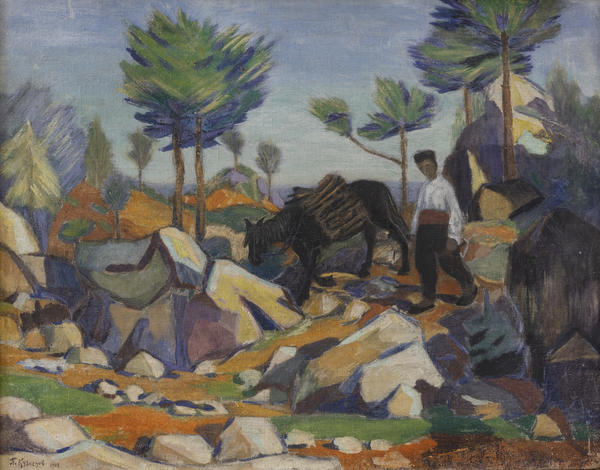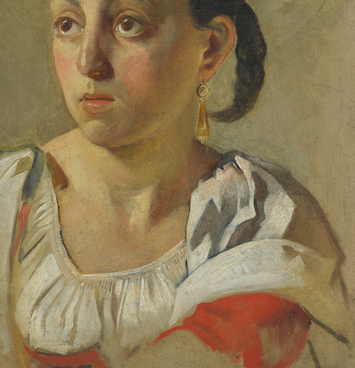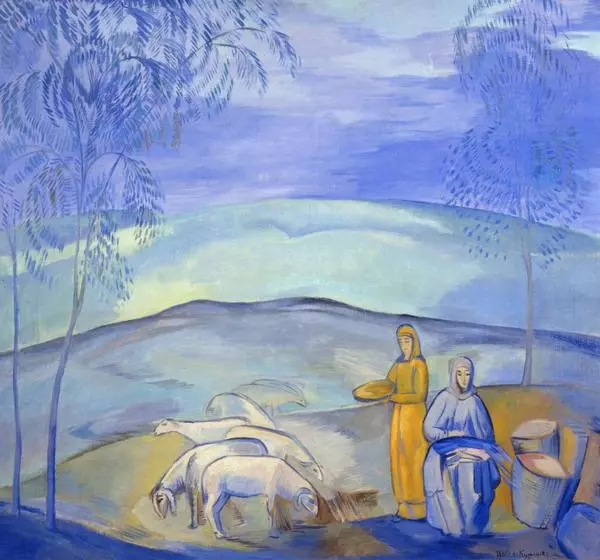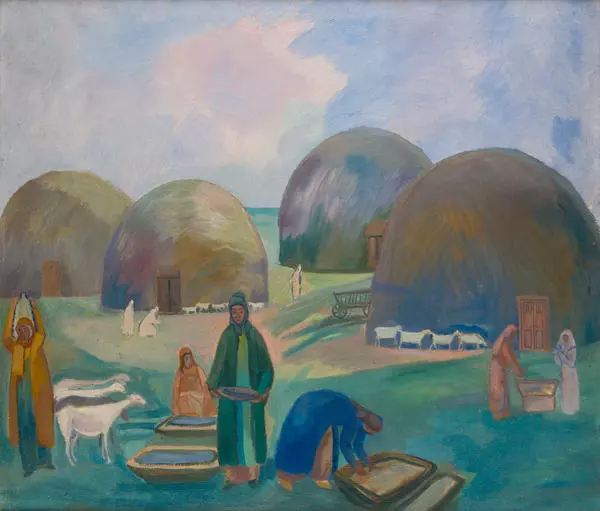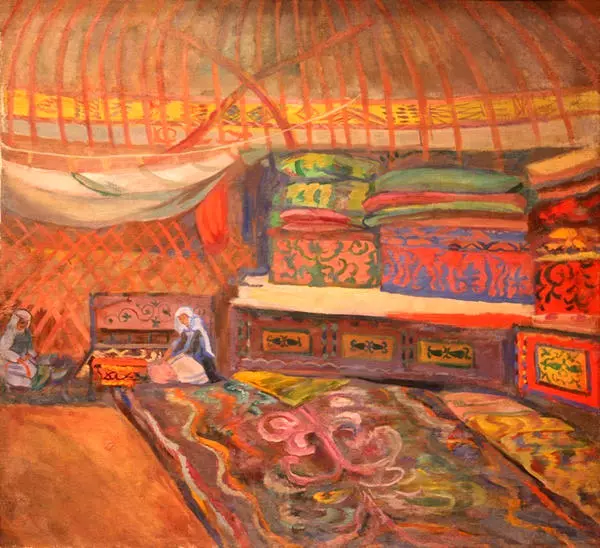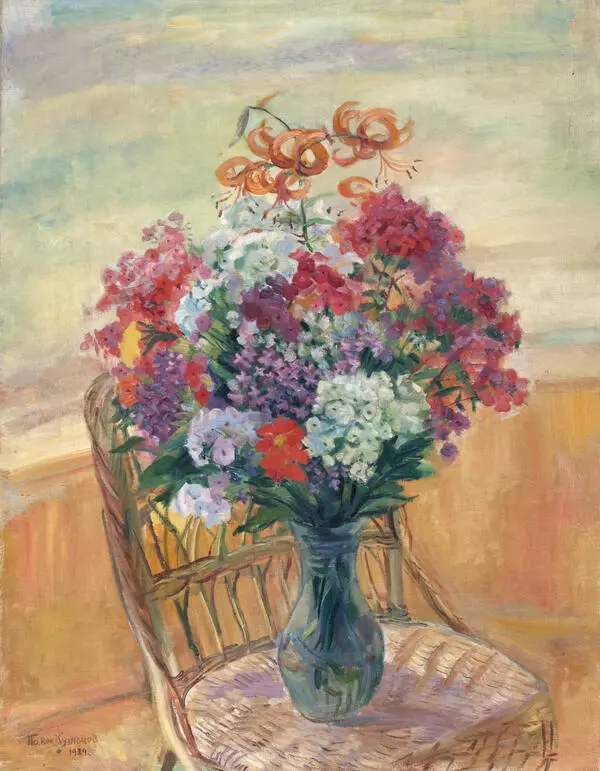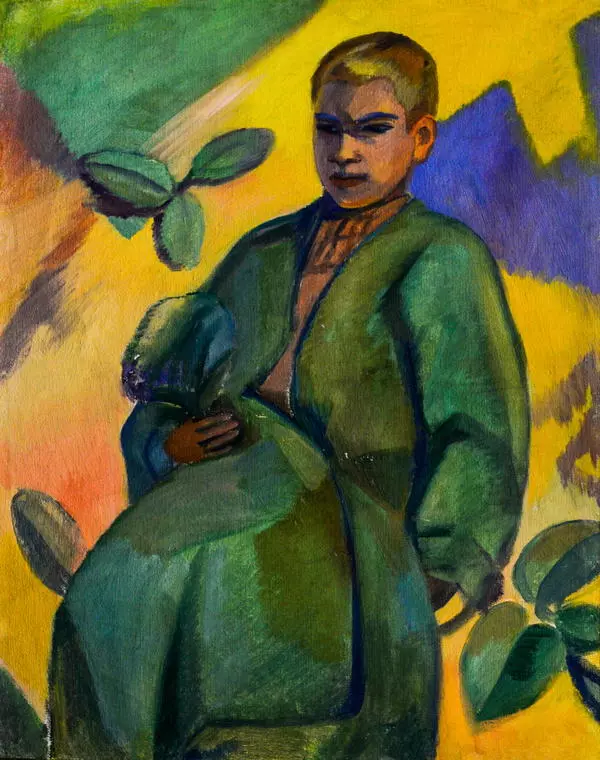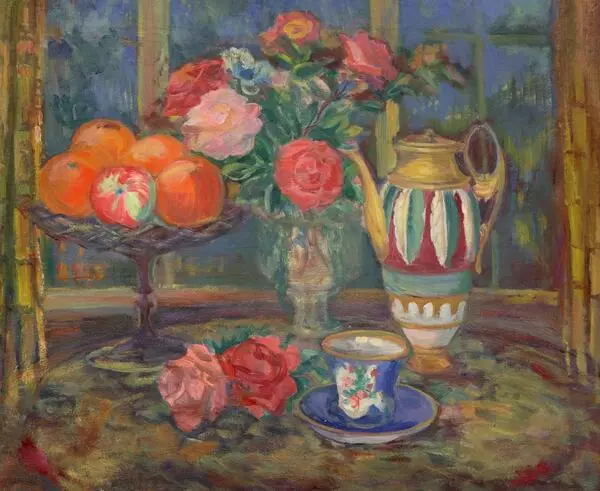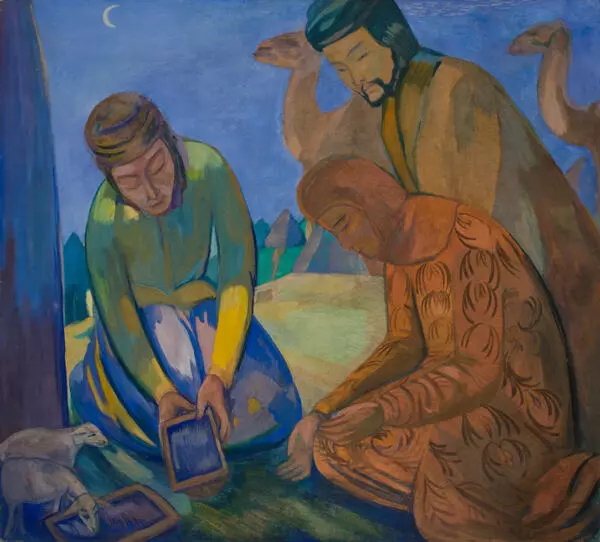Pavel Kuznetsov was born in 1878. He studied at the Moscow school of Painting, Sculpture and Architecture from Konstantin Korovin and Valentin Kuznetsov. In different periods of his life he took part in the exhibitions of different associations such as ‘The blue Rose’, ‘The Four Arts’, ‘The World of Arts’.
‘The Blue Rose’ was an artistic association named after the same title exhibition in 1907. The association consisted of the students from the Moscow school of Painting, Sculpture and Architecture. Painters Pavel Kuznetsov, Petr Utkin and sculptor Alexandr Matveev, the core group of the association, got acquainted in their native town Saratov.
The painters from this association were stuck to the ideas of symbolism and their painting had a lot of blue pastel colors inspired by the works of Victor Borisov-Musatov and Mikhail Vrubel. The ‘Bluerosers’ paid much attention to the musicality and tenderness of their works, they were always seeking for ‘something beyond the limits’.
The artistic style of Pavel Kuznetsov was very much influenced by the works of Borisov-Musatov. His brushwork changed from the modernism and symbolism at the beginning to the compositions of the steppe mirage landscapes and hereinafter to even more dense painting and constructive space compositions.
The Crimea is painted in vivid clear but dense colors with several details’ outlining and that makes it look more similar to the artistic style of 1920s (however it is dated 1908).
The painter worked in the Crimea in 1907-1910 and in 1925-1929. The colours at the painting are bright and vivid, they remind the masterpieces of Paul Gauguin. The author is attracted by “primal” civilization, pure nature and natural wholeness of a man. Kuznetsov makes the silhouette of the man look like a statue without a face, and the horse is depicted just as a dark spot with no details. The stones are colored yellow and orange, the trees have bizarre shapes and outlines — as if the world has just arisen from the original chaos. The landscape is full of some mystic unidentifiable power.
Like many of his contemporaries Pavel Kuznetsov believed that the art developed through an artist’s unusual perception of usual things.
‘The Blue Rose’ was an artistic association named after the same title exhibition in 1907. The association consisted of the students from the Moscow school of Painting, Sculpture and Architecture. Painters Pavel Kuznetsov, Petr Utkin and sculptor Alexandr Matveev, the core group of the association, got acquainted in their native town Saratov.
The painters from this association were stuck to the ideas of symbolism and their painting had a lot of blue pastel colors inspired by the works of Victor Borisov-Musatov and Mikhail Vrubel. The ‘Bluerosers’ paid much attention to the musicality and tenderness of their works, they were always seeking for ‘something beyond the limits’.
The artistic style of Pavel Kuznetsov was very much influenced by the works of Borisov-Musatov. His brushwork changed from the modernism and symbolism at the beginning to the compositions of the steppe mirage landscapes and hereinafter to even more dense painting and constructive space compositions.
The Crimea is painted in vivid clear but dense colors with several details’ outlining and that makes it look more similar to the artistic style of 1920s (however it is dated 1908).
The painter worked in the Crimea in 1907-1910 and in 1925-1929. The colours at the painting are bright and vivid, they remind the masterpieces of Paul Gauguin. The author is attracted by “primal” civilization, pure nature and natural wholeness of a man. Kuznetsov makes the silhouette of the man look like a statue without a face, and the horse is depicted just as a dark spot with no details. The stones are colored yellow and orange, the trees have bizarre shapes and outlines — as if the world has just arisen from the original chaos. The landscape is full of some mystic unidentifiable power.
Like many of his contemporaries Pavel Kuznetsov believed that the art developed through an artist’s unusual perception of usual things.

